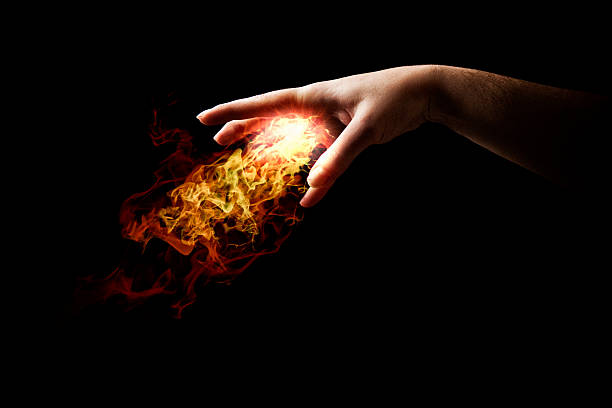If you enjoy this post, please retweet it.
I had a brief interaction with Erik on Twitter (yes, him again) within the context of 5th Edition D&D (“5e”).
Material Components

I stand by my statement but want to clarify it. The spell, Fly, has a single material component: a feather. As Erik mentioned, Heroes’ Feast has a significant one: A bowl worth 1,000 gps. The reason there’s a distinction between the material components for these items is that Heroes’ Feast is far more powerful in the long run. It’s a 6th-level spell vs. a 3rd-level spell, so there needs to be something to balance that effect. This is obvious. What’s less obvious is that the bowl has to be encrusted with jewels, which requires a long process by a skilled craftsman. That’s a spell component with far more limited availability than “a wing feather from any bird.” Such scarcity puts a check on overpowered spells, or at least an overpowered application of such spells.
If a DM tracks material components that have a high financial or logistical cost but largely ignores those with a low cost, game balance is maintained without turning the game into a spreadsheet. It also gives players another strategic dimension. A player must choose between having to collect 1,000 gp bowls to heal up and fortify defenses, or an offensive implement that prevents that damage in the first place. The decision isn’t merely mechanical; it also affects what kind of character a player wants to play.
Somatic and Verbal Components
Speaking of strategy, non-monetary components are also important. Ignoring components robs players of some of the fun. For example, Shatter has a verbal component. That makes sense. You shout to produce sound waves, then magically manipulate those waves to produce the damaging effect. If you remove that requirement, then the Silence spell is completely nerfed for combat, and with few remaining useful applications, the spell will largely be ignored by players. This means that everyone reverts to the same, short list of spells they choose. That’s boring (q.v., though it’s what’s happened for other reasons). This isn’t boring: Because NPCs may use Silence to prevent casting spells, PCs are given yet another strategy to consider during character design.

The same is true of somatic components. Most players ignore somatic components when their PCs have been placed in shackles or tied together. PCs should have to pay attention to the components required by the spells they’ve chosen and make sure they haven’t placed their eggs in too many baskets. That is, they must make sure that some spells have no material components, some have no somatic components, and some have no verbal components. Do enough such spells exist?
How This Impacts Game Design
If there’s a problem here, it’s probably that there are too many spells with verbal or somatic components, so there’s no effective strategy to be had.
Let’s test that hypothesis.
As you may recall, I have a database of all 5e spells that I created for my one stop stat blocks project. You can find details for my methodology buried within this post, but I’ll point out that there are a total of 457 spells in those sources (deleting duplicates between the Elemental Evil’s Player Companion and Xanathar’s Guide to Everything). A simple query gives me the following:
| Number (Percentage) | |
| V | 52 (11.38%) |
| VS | 149 (32.60%) |
| VM | 11 (2.41%) |
| VSM | 220 (48.14%) |
| S | 17 (3.72%) |
| SM | 8 (1.75%) |
Material components are required by over 52% of spells, but never is there a spell that can be cast by a caster who’s bound and gagged but manages to pull a material component out of a hidden pocket. That is, there are no spells that require only a material component. 15% of spells can be cast with either a verbal or somatic component by itself, so those spells should be quite useful if material components are tracked. Almost 95% of spells require a verbal component, and over 84% require a somatic component. Clearly, the game designers didn’t intend for casters to be able to cast while bound and/or gagged.
| Source | Level | Spell |
| Player’s Handbook | 8 | Demiplane |
| Guildmaster’s Guide to Ravinca | 0 | Encode Thoughts |
| Elemental Evil Player’s Guide | 0 | Control Flames |
| Elemental Evil Player’s Guide | 0 | Mold Earth |
| Elemental Evil Player’s Guide | 0 | Shape Water |
| Elemental Evil Player’s Guide | 0 | Thunderclap |
| Elemental Evil Player’s Guide | 1 | Absorb Elements |
| Elemental Evil Player’s Guide | 1 | Catapult |
| Elemental Evil Player’s Guide | 1 | Ice Knife |
| Xanathar’s Guide to Everything | 0 | Primal Savagery |
| Xanathar’s Guide to Everything | 1 | Snare |
| Xanathar’s Guide to Everything | 2 | Mind Spike |
| Xanathar’s Guide to Everything | 3 | Catnap |
| Xanathar’s Guide to Everything | 5 | Steel Wind Strike |
| Xanathar’s Guide to Everything | 6 | Mental Prison |
| Xanathar’s Guide to Everything | 8 | Illusory Dragon |
| Xanathar’s Guide to Everything | 9 | Psychic Scream |
I’d like to think that having a verbal component to, for example, a Power Word spell is more a question of flavor than mechanics. Even if that’s the normal approach, playtesters were probably forced to abide by the relevant rules when playtesting, and so the balance in the game was inevitably shaken out requiring components in most scenarios.
Consider that one of my criticisms of how D&D monsters are designed is that they all use the same spell selection. This list of spells is heavily weighted towards spells that are either overpowered or simple to remember without having to look up their details. For the first five levels, here are the top five spells by use by NPCs in the relevant sourcebooks (“preferred spells”). I skipped preferred spells higher than 5th level because there are far too few of those spells even used for a “top 5” list to make any sense, and besides, above 5th level none of those spells are used more than 8 times in all the sourcebooks combined.
- Cantrips: Mage Hand, Prestidigitation, Light, Minor Illusion, Ray of Frost
- 1st: Shield, Detect Magic, Magic Missile, Mage Armor, Cure Wounds
- 2nd: Hold Person, Invisibility, Detect Thoughts, Misty Step, Scorching Ray
- 3rd: Dispel Magic, Counterspell, Fireball, Lightning Bolt, Fly
- 4th: Dimension Door, Banishment, Stoneskin, Blight, Polymorph
- 5th: Scrying, Hold Monster, Cloudkill, Wall of Force, Cone of Cold
I’ve played with hundreds of different people through organized play, organized weekly game days across the Washington, DC area for a gaming club over about 250 members, and ran a convention for a couple of years. In my anecdotal experience, this is nearly identical to the list used by PCs, but I can’t technically prove that. Almost no one responds to my polls. 🙂
So, just for shits and giggles, let’s look at what happens to the numbers above when we limit ourselves to preferred spells.
| Number (Percentage) | |
| V | 2 (6.67%) |
| VS | 11 (36.67%) |
| VM | 1 (3.33%) |
| VSM | 14 (46.67%) |
| S | 1 (3.33%) |
| SM | 1 (3.33%) |
The numbers are too small to take too seriously, but they look about the same with the exception of spells requiring only verbal components (only Dimension Door and Misty Step). In case you’re curious, Counterspell is the only preferred spell requiring only a somatic component. So, preferred spells can be even more often nerfed if we enforce components. If we do so, perhaps we’ll see a more varied suite of spells at the table, but not by much in 5e. There don’t seem to be many alternatives that avoid the need for particular components.
What Have We Learned? Not Much.
I think this was a bit of work to say simply that the game was balanced during playtesting under a strong assumption that casters could be nerfed, especially by one another. Not enforcing components just further aggravates the existing problem of only a few spells ever being used. In the end, I’m sure people are having fun even if they don’t worry about components, but if a DM wants to remove spell components, I’d much rather see the DM remove them to urge players to choose spells other than the ones on the preferred (spell list, giving several spells the ability to be cast with only one type of component.
Food for thought for game designers of the future and those willing to do the work in changing 5e now.
Variety is the spice of life.
Follow me on Twitter at @gsllc
Follow Erik Nowak @Erik_Nowak
Follow Brian Taylor @brian_c_taylor
Dungeons & Dragons is a trademark of Wizards of the Coast, LLC, who neither contributed to nor endorsed the contents of this post. (Okay, jackasses?)
